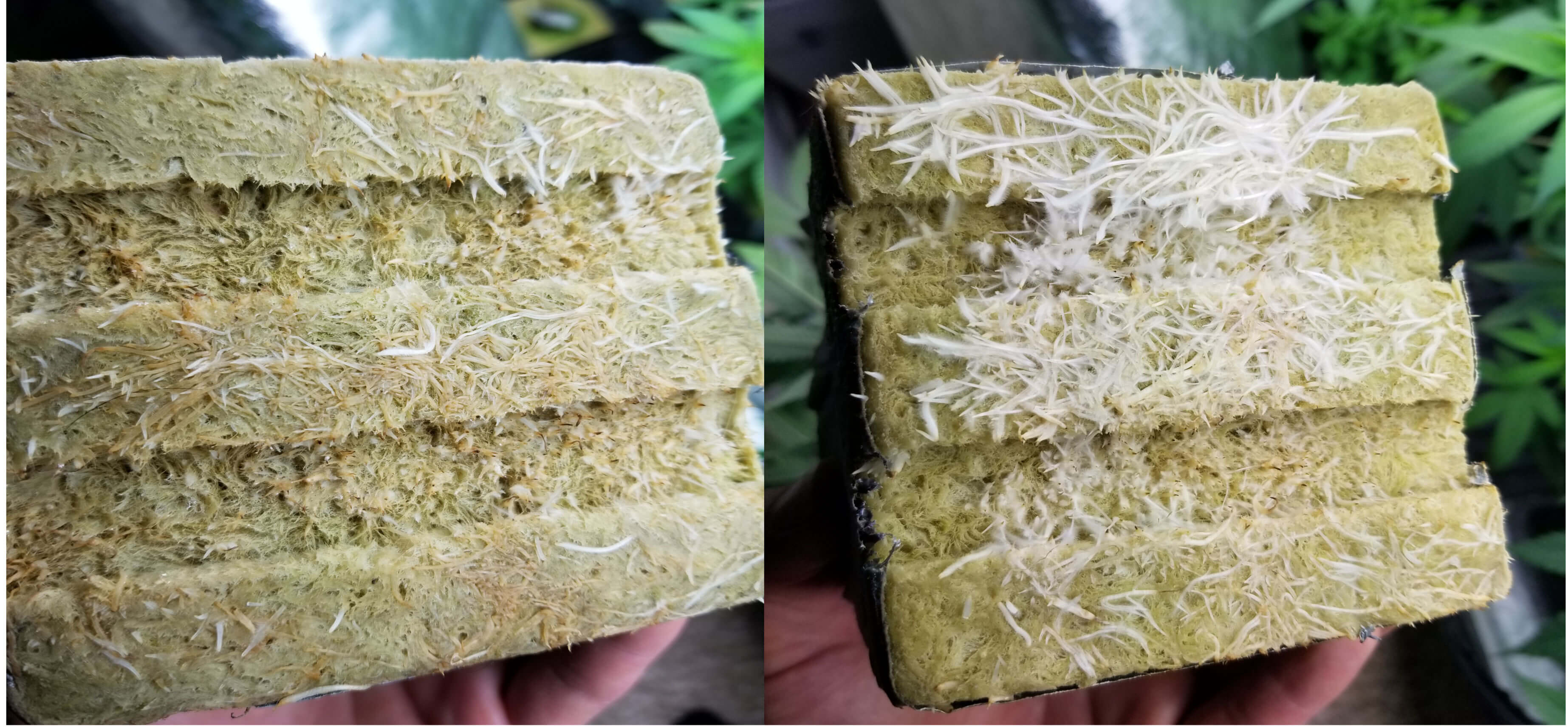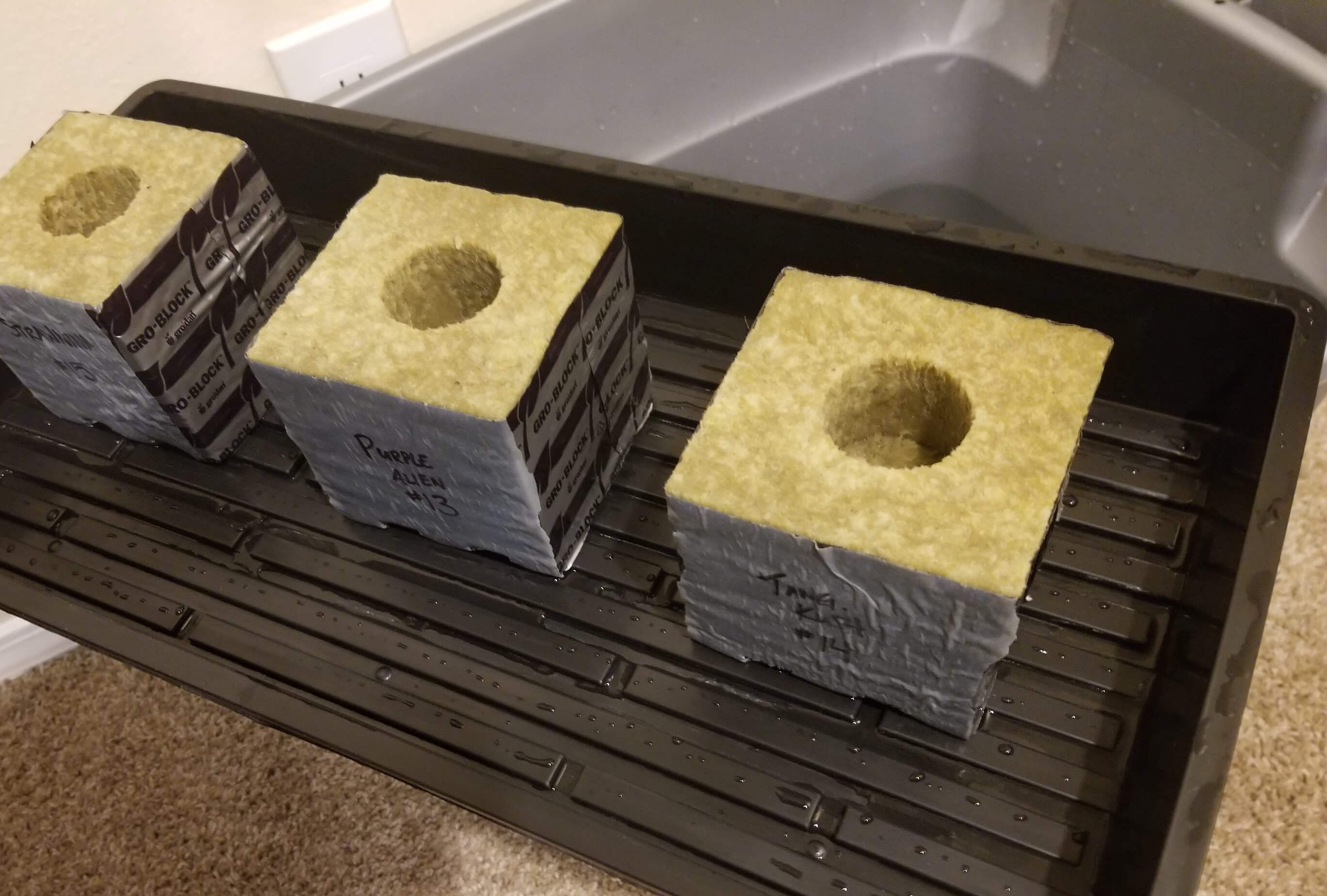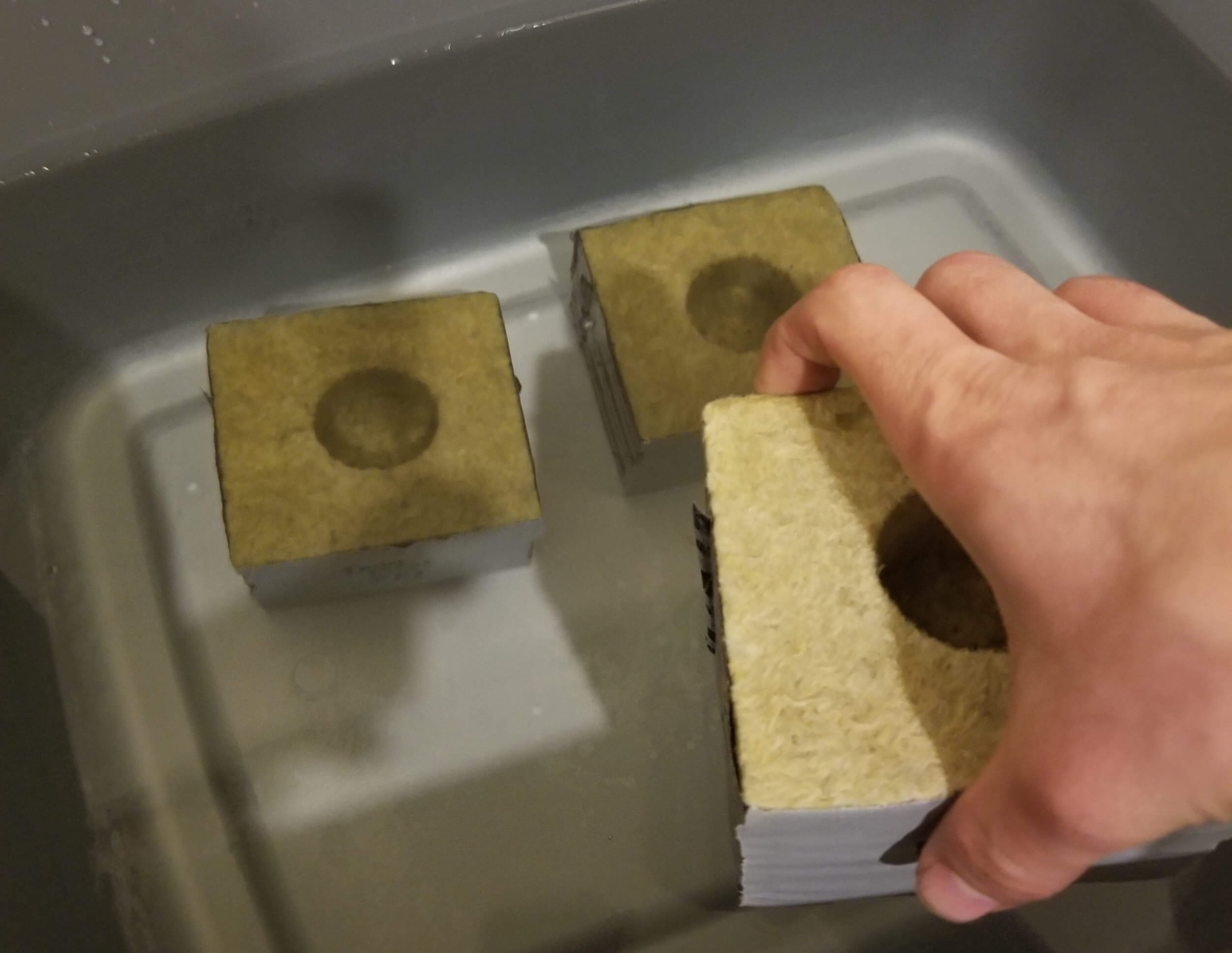- What is Rockwool?
- Why Prepare Rockwool?
- Prep Rockwool For Cultivation
- Environmental Concerns
What is Rockwool?
Growers use rockwool cubes for propagation and blocks for vegetative and flowering cannabis plants. Rockwool is a porous growing medium that has water retention capabilities similar to sand. The same material has also been used as insulation prior to its use as a growing medium. It has a limited water-buffering capacity which could easily adversely affect the quality of a plant’s life. This particular growing medium usually has a high initial pH level (also known as high alkalinity) which needs to be lowered before planting. Soaking the rockwool as a way of preparation which can correct the pH level of the substrate. Even if the rockwool has an adjusted pH prior to preparation by manufacturers, soaking rockwool can help ensure that the medium drains sufficiently as it usually ships completely dry (7).

Rockwool is a naturally alkaline growing medium that is manufactured by taking basalt rock and melting it at an extremely high temperature (3000°F+) and then blown and pushed into a large spinning chamber that pulls and spins the material into fibers. The fibers are then compressed into large mats which can then be cut into the various cubes, blocks, and slabs that growers are familiar with and are held together using a binding agent (4). Other forms of stone wool such as granulate is available and can be added to various potting mixes to improve aeration or tilth. The high temperatures used during the manufacturing process render the substrate inert. Since rockwool is inert, there are no naturally occurring nutrients such as potassium which is sometimes found in coco. Also, there are no beneficial microbes and they may have slower initial growth as there are lower levels of carbon within the substrate until plant growth has been established. Rockwool is actually a company name that went on to become the generic term for this type of product material known as stone wool (8). Companies like Grodan and Cultilene are more known for creating stone or mineral wool that is used in cultivation. Grodan also has a brand known as ParGro which is an alternative to Grodan.

Why Prepare Rockwool?
Preparing rockwool cubes, blocks, and slabs before use is crucial to maximize the efficiency of it as a medium. Without the preparation of the rockwool medium, the pH will be unstable which can cause deficiencies and nutrient lock out issues for cannabis growers. Not only will the quality of the cannabis plant’s life diminish, but the quality of the end product can also suffer as a result (3). Another reason to prepare the rockwool medium is to ensure that it drains sufficiently during irrigation.

Prep Rockwool For Cultivation
Unlike most other media, rockwool is shipped completely dry and this makes the initial soaking or feeding more crucial. Preparation of the rockwool for use can range from a quick submerge into the nutrient solution to soaking into the nutrient solution for several hours depending on what system works best for your grow.

Use distilled water or filtered water to soak rockwool for several hours in a light nutrient solution with a pH balance of 4.5. A bin, tote, or sink can be used to hold about 4-5 gallons of nutrient solution and the rockwool can be placed inside. The rockwool will initially float, but will sink to the bottom as it absorbs water.
After several hours, you can remove the rockwool from the nutrient solution and test the pH runoff of your cubes. Ideally you want the pH runoff to be in a range of 5.5 - 5.9. If the pH runoff is testing higher than this range, then repeat the soaking process to ensure the pH is at the right level. The soaking neutralizes the natural alkalinity of rockwool which makes it more suitable for cannabis cultivation. When you are done soaking your rockwool cubes, discard the used nutrient solution.

When the rockwool is ready for use, any top watering will work well. Individuals who hand water will take care to water the top of the rockwool block and let the water soak through. If you are using an automated watering system then using dripper stakes on the top of the rockwool block is ideal. If the top surface of the rockwool does not feel really moist, then you can limit algae growth on the top surface due to low surface moisture. Rockwool can receive large volumes of irrigation without water-logging the plants due to its ability to drain well. After watering, the rockwool’s structure allows it to have a balance of water and air within the medium which is necessary for growth. If you are experiencing any crop health issues, then you can flush the medium to help correct these issues and they can be corrected at a faster rate than other substrates. This is also partly due to the fact that rockwool has a zero Cation Exchange Capacity (CEC) which does not restrict the availability of nutrients to plants (2).
Environmental Concerns
Rockwool or stone wool does not biodegrade in a landfill after being tossed in the trash, instead it will stick around almost indefinitely. This can be a concern for growers and some try to remedy this issue by reusing rockwool in certain instances such as mixing with outdoor soil mixes. Other growing mediums do not have this sort of issue on this level and therefore if the environmental impact of your grow is of concern then it may be best to avoid or limit the use of rockwool.
Comments powered by Talkyard.